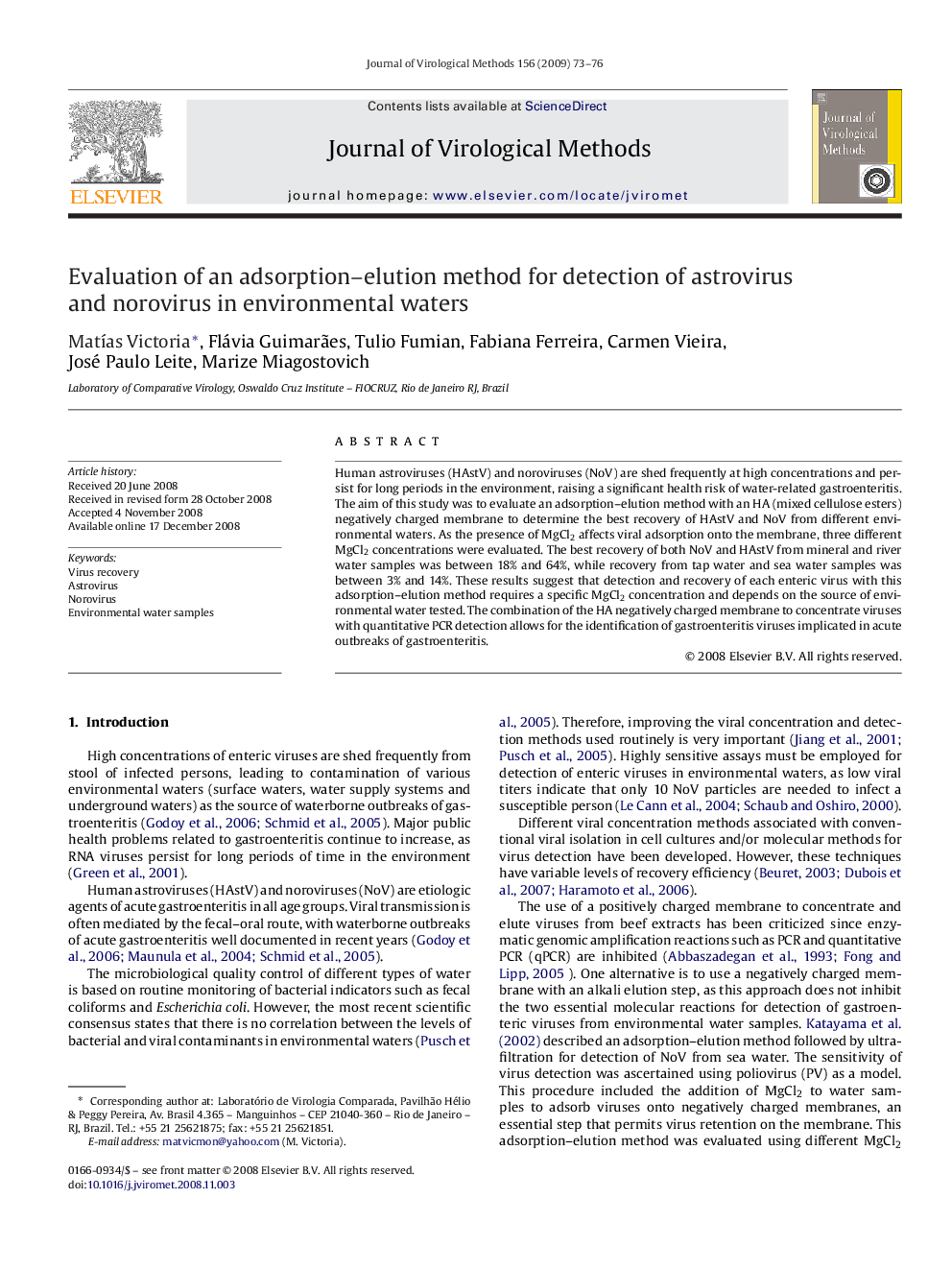| Article ID | Journal | Published Year | Pages | File Type |
|---|---|---|---|---|
| 3407743 | Journal of Virological Methods | 2009 | 4 Pages |
Human astroviruses (HAstV) and noroviruses (NoV) are shed frequently at high concentrations and persist for long periods in the environment, raising a significant health risk of water-related gastroenteritis. The aim of this study was to evaluate an adsorption–elution method with an HA (mixed cellulose esters) negatively charged membrane to determine the best recovery of HAstV and NoV from different environmental waters. As the presence of MgCl2 affects viral adsorption onto the membrane, three different MgCl2 concentrations were evaluated. The best recovery of both NoV and HAstV from mineral and river water samples was between 18% and 64%, while recovery from tap water and sea water samples was between 3% and 14%. These results suggest that detection and recovery of each enteric virus with this adsorption–elution method requires a specific MgCl2 concentration and depends on the source of environmental water tested. The combination of the HA negatively charged membrane to concentrate viruses with quantitative PCR detection allows for the identification of gastroenteritis viruses implicated in acute outbreaks of gastroenteritis.
